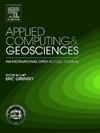Analyzing expert decision-making in geosteering: Statistical insights from a large-scale controlled experiment
IF 3.2
Q2 COMPUTER SCIENCE, INTERDISCIPLINARY APPLICATIONS
引用次数: 0
Abstract
Geosteering is a sequential decision-making process used in the oil and gas industry which adjusts and controls the drilling trajectory of a well in real time, aimed at maximizing values derived from hydrocarbon production operations. For layered geological formations, Stratigraphy-Based Steering (SBS) has emerged as a popular approach to generate decision-supporting information to guide steering horizontal wells. This method involves the interpretation of log data measure while drilling, the development of a geomodel around the wellbore based on the log interpretation, and the use of the geomodel to guide well placement decisions. However, the main challenge in geosteering is that it is often not approached as a structured decision-making process. Consequently, essential decision quality elements—such as defining clear objectives and their trade-offs, alternatives, and properly quantifying uncertainties—are often missing. This issue causes a lack of unique and standard guidelines for geosteering practices.
This paper presents an analysis of data collected from 349 participants of a controlled geosteering experiment – the Rogii Geosteering World Cup (GWC) 2021. The data consists of log interpretations and geosteering decisions made by the participants, acting as geosteerers, for two wells representing conventional and unconventional drilling operations. More than 10,000 snapshots were recorded, consisting of interpretations of log data for each participant's well and corresponding decisions, every 2 min. These snapshots form a comprehensive database that is useful and valuable to provide insights into the decision-making process of the geosteerers and learning for improving geosteering decision-making. The dataset utilized in this study is openly accessible and published alongside the paper.
The novelties and key contributions of this paper are (1) a statistical analysis of recorded data to investigate causation and correlation between geosteering decisions and the quality of well placements, (2) revealing the factors that contribute to good geosteering decisions and well placements and (3) evaluating the extent to which good well placements are the result of interpretation and decision-making skills versus luck. By conducting a comprehensive statistical analysis of the recorded data, this study provides insights into the geosteering decision-making process and identifies key factors that are likely to contribute to favorable outcomes.
分析地质导向中的专家决策:从大规模对照实验中获得的统计见解
地质导向是一种连续的决策过程,用于石油和天然气行业,实时调整和控制井的钻井轨迹,旨在最大化油气生产作业的价值。对于层状地质地层,基于地层的转向(SBS)已经成为一种流行的方法,可以生成决策支持信息来指导转向水平井。该方法包括在钻井过程中对测井数据进行解释,根据测井解释建立井筒周围的地质模型,并利用地质模型指导井位决策。然而,地质导向的主要挑战是,它通常不是作为一个结构化的决策过程来处理的。因此,基本的决策质量要素——比如定义清晰的目标和它们的权衡、选择,以及适当地量化不确定性——经常被忽略。这一问题导致地质导向实践缺乏独特和标准的指导方针。本文对349名受控地质导向实验参与者的数据进行了分析——2021年Rogii地质导向世界杯(GWC)。这些数据包括测井解释和地质导向决策,参与者作为地质导向师,对两口井进行了常规和非常规钻井作业。每2分钟记录1万多个快照,包括对每个参与者的井的测井数据的解释和相应的决策。这些快照形成了一个全面的数据库,对地质导向师的决策过程和改进地质导向决策的学习提供了有用和有价值的见解。本研究中使用的数据集是开放访问的,并与论文一起发布。本文的新颖之处和关键贡献在于:(1)对记录数据进行统计分析,以调查地质导向决策与井位质量之间的因果关系和相关性;(2)揭示有助于良好地质导向决策和井位的因素;(3)评估良好井位是解释和决策技能与运气的结果的程度。通过对记录数据进行全面的统计分析,本研究为地质导向决策过程提供了见解,并确定了可能导致有利结果的关键因素。
本文章由计算机程序翻译,如有差异,请以英文原文为准。
求助全文
约1分钟内获得全文
求助全文
来源期刊

Applied Computing and Geosciences
Computer Science-General Computer Science
CiteScore
5.50
自引率
0.00%
发文量
23
审稿时长
5 weeks
 求助内容:
求助内容: 应助结果提醒方式:
应助结果提醒方式:


